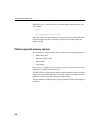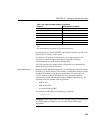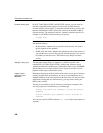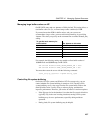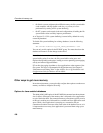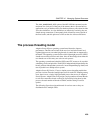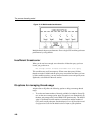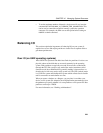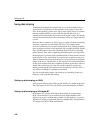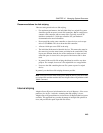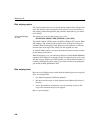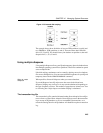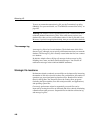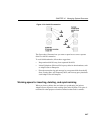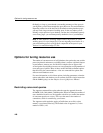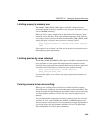
Balancing I/O
442
Using disk striping
Traditional file management systems allow you to locate individual files on
specific disks. Consequently, all file operations occur against a single disk
drive. Some operating systems allow you to create logical devices or volumes
that span multiple disk drives. Once a file fills the first disk drive, it is
automatically continued onto the next drive in the logical volume. This feature
increases the maximum file size and concentrates activity on a single disk until
it is full.
However, there is another way. Disk striping is a generic method of spreading
data from a single file across multiple disk drives. This method allows
successive disk blocks to be located on striped disk drives. Striping combines
one or more physical disks (or disk partitions) into a single logical disk. Striped
disks split I/O transfers across the component physical devices, performing
them in parallel. They achieve significant performance gains over single disks.
Disk striping lets you locate blocks on different disks. The first block is located
on the first drive. The second block is located on the second drive, and so on.
When all the drives have been used, the process cycles back and uses additional
blocks on the drives. The net effect of disk striping is the random distribution
of data across multiple disk drives. Random operations against files stored on
striped disks tend to keep all of the drives in the striped set equally busy,
thereby maximizing the total number of disk operations per second. This is a
very effective technique in a database environment.
You can use disk striping either as provided by your operating system and
hardware, or IQ’s internal disk striping.
Setting up disk striping on UNIX
UNIX systems offering striped disks provide utilities for configuring physical
disks into striped devices. See your UNIX system documentation for details.
Setting up disk striping on Windows NT
On Windows NT systems, use hardware disk striping via an appropriate
SCSI-2 disk controller. If your machine does not support hardware disk
striping, but you have multiple disks available for your databases, you can use
Windows NT striping to spread disk I/O across multiple disks. Set up Windows
NT striping using the NT Disk Administrator.



